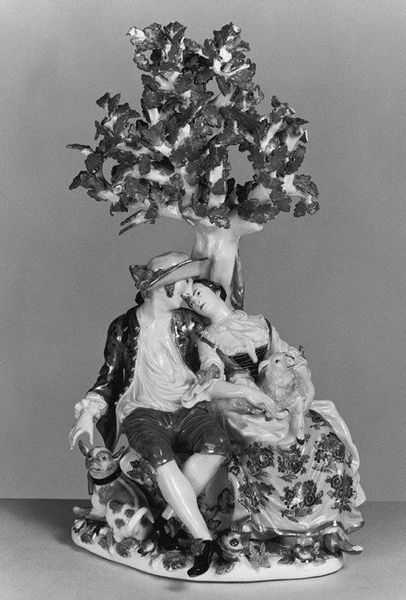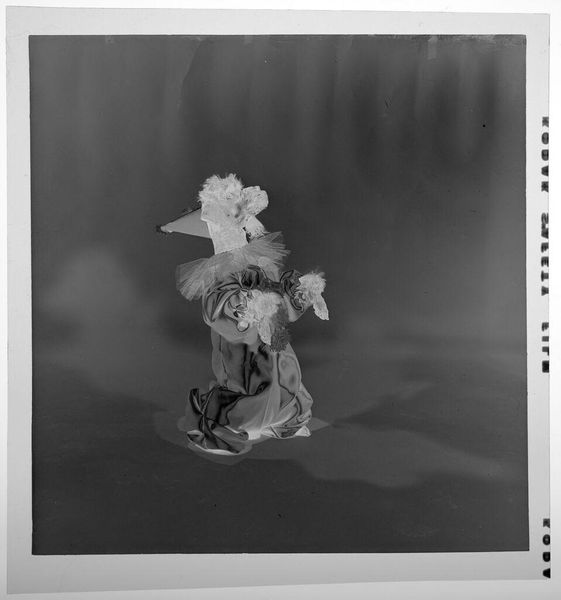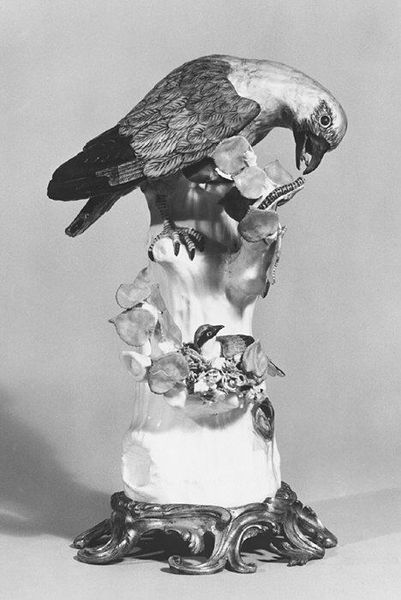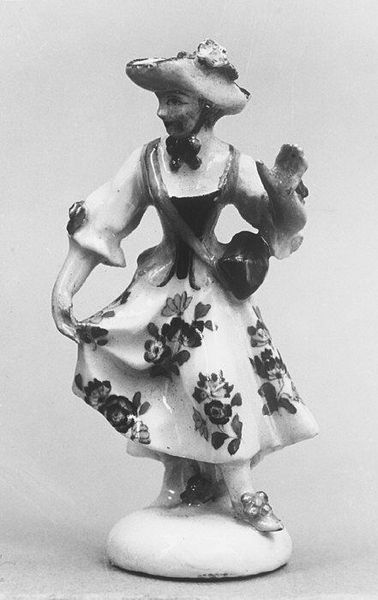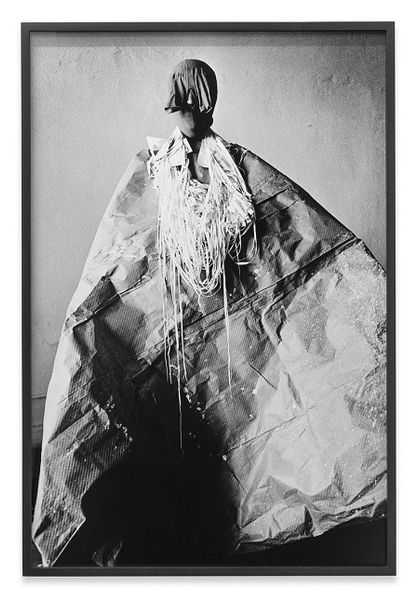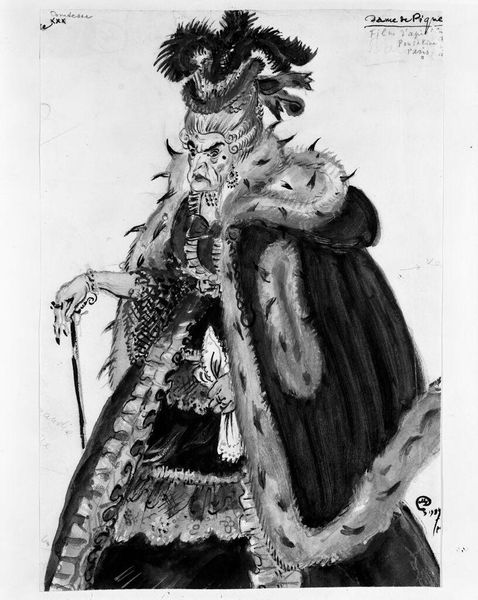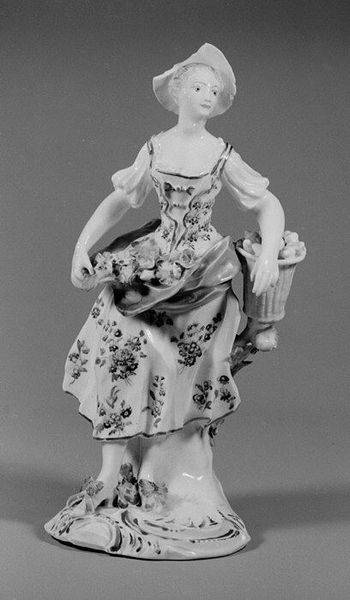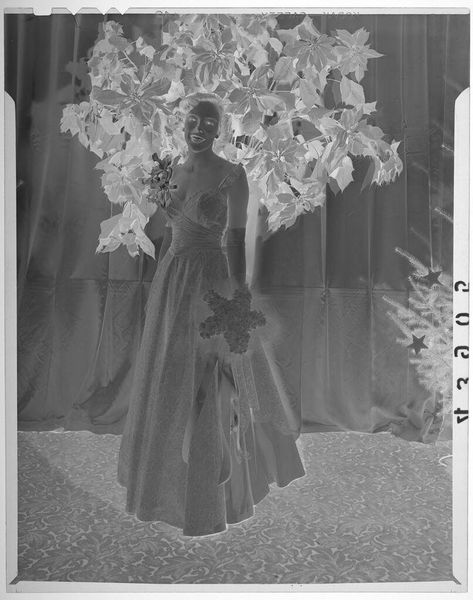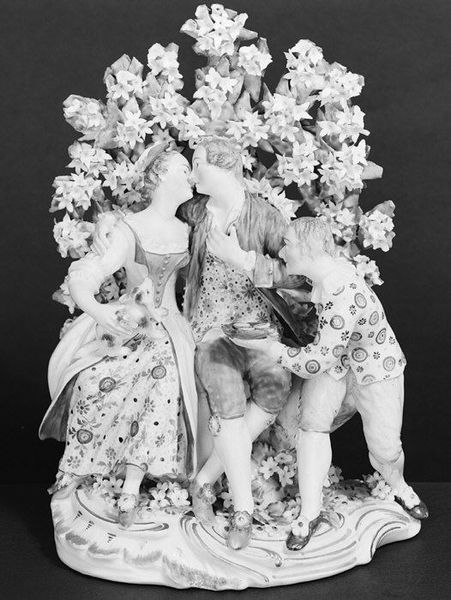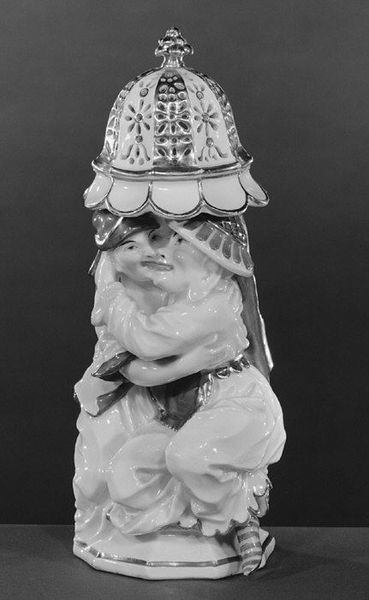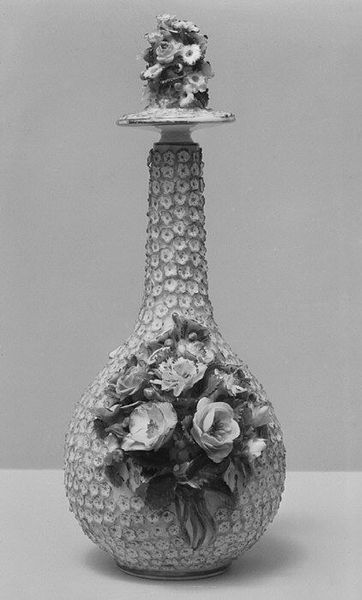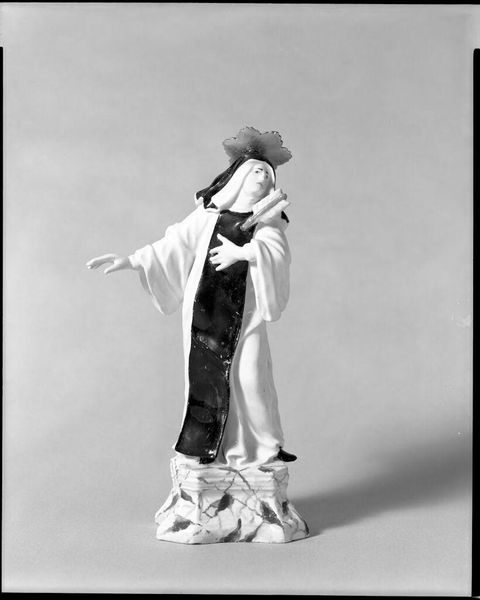
ceramic, porcelain, sculpture
#
ceramic
#
porcelain
#
figuration
#
sculpture
#
genre-painting
#
decorative-art
#
miniature
#
rococo
Dimensions: Height: 11 in. (27.9 cm)
Copyright: Public Domain
Curator: Before us, we have "Rendezvous at the Hunt," a porcelain sculpture crafted between 1741 and 1751 by the Meissen Manufactory. Editor: It feels so… delicately posed. The figures almost seem to float; there’s something fleeting and idealized in their embrace. And the material—porcelain—only reinforces that sense of fragility. Curator: Precisely. Rococo art often traded in this kind of courtly fantasy, and Meissen was at the forefront of popularizing porcelain figurines. Its founder, Johann Friedrich Böttger, unlocked the secret of hard-paste porcelain in Europe. The craze soon spread. Editor: Note how the kiss itself seems like the central motif. There is so much detail surrounding it—the intricate folds of her dress, the carefully arranged foliage, even what appears to be a discarded hunting rifle—all leading our eye to this gesture. This symbolizes the shift of cultural values with pleasure placed over responsibilities. Curator: That rifle you've noted is a vital signifier, the artist incorporates objects that evoke both elegance and practical activities. Courtly society began to be perceived as shallow and decorative by rising merchant middle classes and the intellectuals who represented them, this work becomes a symbolic marker of the shift. Editor: And the very whiteness of the porcelain! It enhances that feel of aristocratic otherworldliness. But look closer. I detect not just innocence, but almost a sly mischievousness. There is definitely a subtext with hunting metaphors with the image of capture being so explicit here. Curator: Yes, absolutely, these small figurines began to reflect an increasing appetite among rising merchants who were new patrons, mimicking tastes of the French court as well as subverting some aristocratic norms of taste as an indicator of their values of pleasure. Editor: It speaks volumes about how images could carry unspoken ideas. Thinking about that impact over time, do you feel an emotional connection to this "Rendezvous," or does it mainly live in the realm of intellectual understanding for you? Curator: It resonates most profoundly as a cultural artifact, illuminating power structures of the past and challenging the perceived notions we now possess. Editor: I'll remember this little tryst and wonder what tales it could tell. Curator: I shall ponder its impact on the rising mercantile class.
Comments
No comments
Be the first to comment and join the conversation on the ultimate creative platform.
